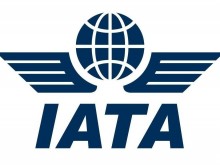 Global passenger traffic for April 2017 increased by 10.7 per cent as compared to April 2016, which was the fastest pace in six years, according to data provided by International Air Transport Association (IATA). The international passenger demand in April 2017 rose 12. 5 per cent as compared to April 2016, with all regions recording double-digit year-over-year traffic increases for the first time in 12 years. Total capacity climbed 7.7 per cent and load factor climbed 3.5 percentage points to 81.5 per cent. Demand for domestic travel climbed 7.7 per cent in April compared to April 2016, while capacity increased 6.2 per cent, causing load factor to rise 1.2 percentage points to 83.0 per cent. All markets reported demand increases with the exception of Australia, which showed a 2.1 per cent decline.
Global passenger traffic for April 2017 increased by 10.7 per cent as compared to April 2016, which was the fastest pace in six years, according to data provided by International Air Transport Association (IATA). The international passenger demand in April 2017 rose 12. 5 per cent as compared to April 2016, with all regions recording double-digit year-over-year traffic increases for the first time in 12 years. Total capacity climbed 7.7 per cent and load factor climbed 3.5 percentage points to 81.5 per cent. Demand for domestic travel climbed 7.7 per cent in April compared to April 2016, while capacity increased 6.2 per cent, causing load factor to rise 1.2 percentage points to 83.0 per cent. All markets reported demand increases with the exception of Australia, which showed a 2.1 per cent decline.
IATA attributed the strong performance to a pick-up in global economic activity and lower airfares. After adjusting for inflation, the price of air travel in the first quarter was around 10 per cent lower than in the year-ago period and it was estimated that falling airfares accounted for around half the demand growth in April. However, it was also noted that the cabin ban on the carriage of large portable electronic devices (PEDs) from 10 Middle Eastern and African airports to the US seemed to have weighed down Middle East-North America passenger traffic. “April showed us that demand for air travel remains at very strong levels. Nevertheless there are indications that passengers are avoiding routes where the large PED ban is in place. As the US Department of Homeland Security considers expanding the ban, the need to find alternative measures to keep flying secure is critical. If the ban were extended to Europe-to-US flights, for example, we estimate a $1.4 billion hit on productivity. And an IATA-commissioned survey of business travelers indicated that 15 per cent would seek to reduce their travel in the face of a ban,” said Alexandre de Juniac, Director General and CEO, IATA.
 Tourism Breaking News
Tourism Breaking News


